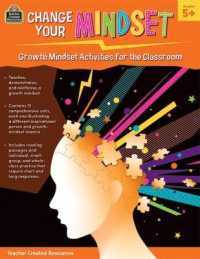Full Description
Shakespeare's Forgotten Allegory posits three startling points: that we have today forgotten a cultural icon that helped to bring about the Renaissance; that this character, used to distil classical wisdom regarding how to raise children to become moral adults, consistently appeared in plays performed between 1350 and 1650; and that the character was often utilised by the likes of Shakespeare and Ben Jonson, and therefore adds a long-forgotten allegorical narrative to their works.
This evidence-based reappraisal of some of the most iconic works in Western literature suggests that a core element of their content has been 'lost' for centuries.
This text will appeal to anyone with an interest in late medieval and early modern drama, especially the works of Shakespeare; to those interested in the history of teaching and child-rearing; to anyone curious about the practical application of philosophy in society; to anyone that would like to know more about the crucial and defining period today known as the Renaissance, and how and why society was redesigned by those with influence; and to all those who would like to know more about how history, which though sometimes misplaced, continues to influenced our modern world.
Contents
Chapter 1. The Cockered Child
Chapter 2. "Thy Parentes Made Thee a Wanton": The History and Cultural Significance of the Cockered Child
Chapter 3. "In Godly Myrth": The Pedagogical Role of Drama
Chapter 4. "To Extoll Virtue Without Faile": Moral Paradigms Found in Morality Drama
Chapter 5. "A Prodigal Absurd Coxcomb": The Cockered Child in Early Modern Comedy
Chapter 6. "The Best Whore in England": The Cockered Daughter
Chapter 7. "Who So Choseth Me, Shall Fynde that God Hath Disposed for Hym:" Redemption and the Virtuous Wife
Chapter 8. An "Ape in a Silken Coat": The Cockered Child in Tragedy
Chapter 9. "A Very Fool and a Prodigal": Moral Allegory in Twelfth Night
Chapter 10. Conclusion








